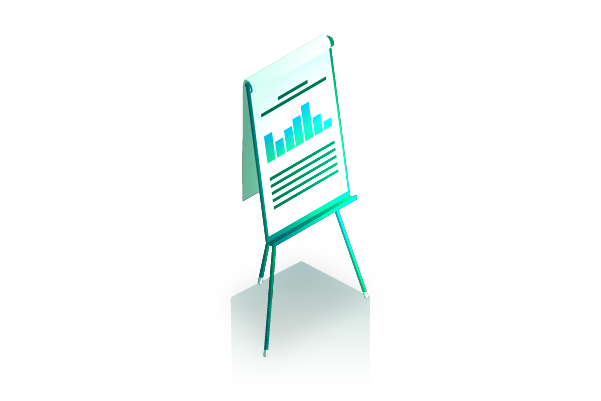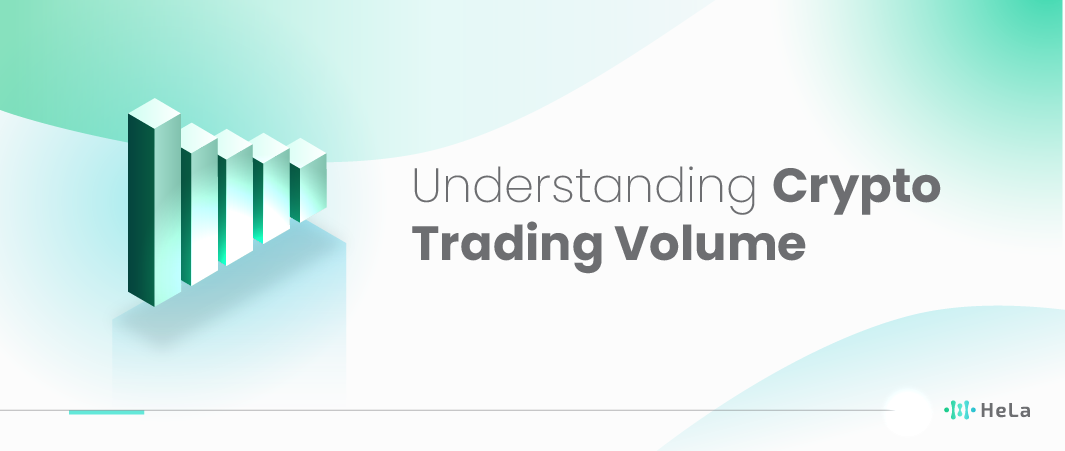Activity of trading and analysis successively emerging within a cryptocurrency market provides us with a complex tool for evaluating its activity level of trading and analysis. In other words, it is a barometer that can be associated with all the trading activities and their liveliness. Heavy trading volumes tend to reflect robust market activity. This means that there is a role for everyone to take part in, i.e. the possibility of a winning opportunity for both the buyer and the seller. Besides, trading volume, which acts as a critical market indicator that reflects market sentiment and entails a channel through which the appreciation or devaluation of e-currencies can be propelled,.
Nevertheless, coping with the operational complexities of high volume online trading is inseparable from the connection to cautiousness, mainly about cryptocurrencies with low volume or trading pairs that are prone to manipulation. Consider it necessary to conduct a more sophisticated analysis of market depth and order book structure, besides the examination of trading volume. As a result, only traders who have a deep understanding of where the markets stand in terms of investing in a cryptocurrency should get involved in it.
What is Crypto Trading Volume?

Crypto trading volume – a built-in figure for cryptocurrency activity that represents the aggregate of the digital assets traded across platforms within a specific period of time. This score metric, usually expressed in terms of the base cryptocurrency of the leading crypto (e.g., Bitcoin, Ethereum) or in FIAT terms (e.g., USD, EUR), is actually a complex and multi-faceted indicator reflecting market activity, liquidity, and investor sentiment and provides the stakeholders in the crypto space with invaluable clues. Essentially, a common feature of healthier markets is the existence of the cornerstone of market health, that is, the trading volume, which reflects the quantity and strength of trading activities within a specific market. Through high trade volume, one can easily point out how market participation is prominent as well as flourishing in the ecosystem, with plenty of occasions for the bargaining of buyers and sellers. Liquidity is a critical determinant of the efficiency of the market; thus, liquidity, which is fueled by trading volume, is a determinant of market efficiency, with higher volumes corresponding to increased liquidity, thereby minimizing price slippage and allowing seamless trade.
On top of that, the indicator’s role as a crucial gauge of market vitality, trading volume, is considered a significant attribute of price discovery, functioning as a channel through which the market mentality is articulated and illustrated. Trends in trading are frequently in conjunction with investor sentiments and volatility. Massive volumes of trading are frequently observed at times of heightened optimism or pessimism. Nonetheless, in the middle of the ups and downs of trading procedures, one cannot oversee alertness, especially in relation to low-volume cryptocurrencies or trading pairs, which could be the prey for the digital brokers whose order books are vulnerable to manipulation because of low liquidity.
The volume matters greatly as it provides us with an insightful glimpse into market dynamics; however, it should be used in conjunction with other factors such as market depth, order book dynamics, or valuable fundamental analysis. Through the integration of all these separately focused sources, investors are enabled to build an all-knowing belief system, equipping them to carry through with well-informed choices and to treat the crypto market with a sense of confidence in dealing with its complexities.
To rephrase it, trading is a vital aspect of this industry because it ensures market transparency, liquidity, and efficiency. In consequence, it still keeps its place as the main means of developing market trends, presenting a glimpse of integrity’s actions and thoughts. The use of data analytics and trading volume can be an edge to gain an upper hand in the crypto trading space. Through the analytics of trading volume and other essential data points, market insights are capitalized on while risks are regulated.
Significance of Trading Volume

The significance of the levels of trading volume in financial markets is undeniably one of the key aspects, and it applies equally in the case of cryptocurrency markets. The volume of trades, considered the fundamental indicator of market activity, demonstrates what percentage of the market is actually involved, what its liquidity is, and how the investor’s moods change. Here are several key points elaborating on the significance of trading volume:
Market Activity
It is not only the amount with which we trade but also the most prominent aspect of the market, which shows us what the real situation is like. It is the result of numerous investors, dealers, institutions, and robots manipulating their purchasing and selling processes. High trading volume indicates that the environment is full of life and activity, including investment and risk management.
This is when market participants pursue and take some investment opportunities, or it could be as well protecting them from risks. On the flipside, low trading volumes would be a representation of the period when market participants are somewhat skeptical of the absence of major events or catalysts or a time of stagnation. Exploring the intricacies of activity in the trade volume, one may be able to see into the minds of current market feelings as well as potential trends.
Also Read: Top 5 Layer 1 Crypto Projects Stand as Pillars of Innovation in 2023
Liquidity
Liquidity is the essence of financial markets, as this is what maintains order and drives most of the trading by providing investors with opportunities to sell or buy assets without having a negative impact on prices. A substantial exchange of volume of transactions between a buyer and a seller occurs while making a deal in trade.
Due to this, the level of liquidity can be evaluated by the depth and breadth of the market scale. Increased trading volumes translate to higher market liquidity, which, in turn, increases the number of market players ready to engage at standard prices. Such a liquidity record has the implication of a possible improvement in the trading conditions, from smaller bid-ask spreads to price slippage that gets better, which translates directly into the efficiency of the market and its attractiveness to trade on. At least, liquidity here will be high on the list of priorities for the institutional investors and traders who have large volumes of orders and the need for their orders to have a tiny effect on the market price.
Price Discovery
The assignment of market prices is called price discovery, whereby supply and demand force dynamics play a crucial role. The trading volume is an indispensable part of the market data as it is capable of revealing important details about the investors’ intention to buy the stocks at a number of price levels.
In truth, more exchanged volumes ensure stronger mechanisms of price discovery; they represent a mutual perception on behalf of the market participants about the fair value of an asset. The mechanism of price discovery is temporally based, with a variety of factors that include economic data, the affairs of the nation, corporations’ earnings, and investor sentiments involved in it. The ability to consider the relationship between price action and trading volume levels in the market makes investors make more precise and well-thought-out decisions about opening and closing positions.
Market Sentiment
Market sentiment implies that a group of investors and traders in a particular market or asset behave similarly depending on how they perceive the market. Changing trading volumes are likely to give clear indications about the investment outlook and confidence level of the traders, which is always considered to be a good sign expressed by the sentiment of the market participants.
For example, an increased trading volume among investor’s price rallies to the upside trend indicates that there is a bullish sentiment, where investors show high enthusiasm and conviction in the expectation of an increased price of the asset. However, a drop in trading volume as prices tank may point out the investors action of less interest and are probably in a wait behavior. Market sentiment as momentum pushes the price and sets changes in market behavior, including trends and volatility. Regular tracking of trading volume along with other sentiment indicators will aid investors in unveiling the role of sentiment dynamics in the market and understanding the movement of price trends.
Technical Analysis
Technical analysis is a strategy that is used by traders, who study historical prices, alongside indicators that they find on a chart. They then use these patterns, trends, and indications to forecast and take decisions on potential trades.
Trading volume is one of the largest technical analysis components with huge benefits, as its evaluation shows the real value and strength of the price movements. Another useful indicator when dealing with volume is the difference between volume indicators such as VWAP, which are Volume Moving Averages or Volume Oscillators. They confirm the validity of trends by showing us the intensity of demand or supply, which is what drives the trends. Using volume as well as price movements, technical analysis helps to recognize important exchange moments, set up buy and exit points and move stops, and also determine profit goals.
Confirmation of Trends
Trends may be represented in the form of clustering of peaks and valleys in price charts (in an uptrend, when highs are higher and lows are higher, or in a downtrend, when the highs are lower and lows are lower), however the case may be. The direction of trading in the trading volume can be considered a supplement to other technical analysis methods that received the signal that a trend was emerging.
As an example, a strong breakout against a high trading volume is valued over a modest breakout with a low volume. The stronger breakout indicates more conviction from the market participants who bought those stocks. As with the consolidation, a decrease in the volume wherein traders are engaging in trading could implicate a weakening momentum and could connote a potential reversal or a continuation pattern. Considering this, by keeping an eye on trading volume dynamics, an individual trader is able to spot more likely trading setups and apply risk management more efficiently.
Factors Influencing Trading Volume

A number of factors that shape the extent of activity in financial markets, including cryptocurrency, are identified. The knowledge of these factors is not only good but fundamental for any investor or analyst to achieve precise analysis of financial market movements and make this kind of decision. Here’s a detailed exploration of the key factors influencing trading volume:
Market Sentiment
Market sentiment is an inseparable part of the investor’s mentality and mood as a whole, and it can be either bullish or bearish. A favorable mood, driven by enthusiastic emotions about a country’s economic growth, a corporate earnings subsection, or a positive news environment, usually leads to more transactions being carried out and an increment in the trading levels.
The positive mood surrounding possible growth opportunities and enterprises may be counteracted by negative psychology that comes from the risks of economic decline, political tensions, or poor earnings. Then, those who are in the mood to sell may jump into the market looking for adjustments in their positions or how to cut their losses. Stock market sentiment is governed by a multitude of factors, like economic statistics, diplomatic rifts, instrumental bank measures, and reporting by the media, each of which is a good reason for fluctuations in trading volume.
Also Read: Top 10 Fastest Blockchain Platforms in 2024
Price Volatility
In terms of the price volatility factor, this is marked by the waves of ups and downs of an asset, and this factor does affect the behavior of the trading volumes. In view of high volatility, speculators follow the trend that causes a constant influx of buy and sell orders, resulting in a higher turnover.
Thus, they try to benefit from the existing situation. Conversely, stability frameworks can affect trading activity often, as investors who perceive low opportunities for profitable trading often wait on the sidelines as they monitor the environment for possible trends that can arise. Volatility is driven by a number of these factors, which comprise market news, the release of economic data, geopolitical issues, and changes in trader sentiment. These are the contributing factors to the variation in trading volumes.
Market Structure and Regulation
The design and actual workings of financial markets are instrumental in creating the patterns of trading volume, which show either the level of participation or the mechanism of operation. Modern markets forming with clear rules, strong investor protection, and efficient market infrastructure gather more trading volumes, as investors participating in this market feel more confident in the available conditions and market functioning.
In contrast, markets with sluggish regulation, a lack of transparency, or general fears of fraud and manipulation can potentially see reduced trading volumes due to investors staying in and observing or seeking alternative investment avenues. Regulations and enforcement picks, as well as market reforms, can also be market factors determining the trading volume through the value of market participants and behavior, fluid conditions, and investor confidence creation.
Liquidity Providers
Marketplace participants like market makers, arbitrageurs, and high-liquidity institutions are situated at the center of executing trading, with the latter controlling the movement and hence the composition of the trade volume. Market makers’ primary function is price formation during the initiation and execution of trades.
Dealing with order flow, they remove selling supply/demand and price risk by providing prices, individualize bid-ask spreads (taking advantage of market inefficiencies), and absorb surplus trades. their existence, posing liquidity problems in the market, lowering transaction costs, and creating trading volume through the trading process without a hitch or discovery of price. Institutions and arbitrageurs bring substantial volumes to trading through block size trades, taking a chance to explore temporary pricing distortions across regions and providing liquidity to markets in times of stress. The interactions of liquidity providers and market participants contribute to trading volume patterns, market conditions, and market efficiency by affecting liquidity, quality of trade, and overall efficiency.
Market Participants
The market structure is composed of both those private individuals and other entities, hedge funds, quantitative trading companies, traders’ desks, and funds of that kind. This sort of composition has a direct impact on trading volume and market liquidity.
Institutional investors and algorithmic trading firms, which mainly see a block of traders using advanced trading strategies, superior technology, and huge amounts of capital, can provide a massive upsurge in trading volume, especially in high-frequency trading situations. Institutional traders, for instance, usually act as trading desks, placing large orders that impact prices across different asset classes, reflecting their propensity to buy and sell. Retail traders, however, possess differential trading habitats and appetites that engage in endless buying and selling activities in the market, thus contributing to the dynamic volume through the aggregate of their trade volumes. Market participants from various backgrounds, all with their own objectives for investment, the level of risk they are willing to accept, and their trading styles, are the main determinants of how the trading volume is spread and help establish the liquidity patterns in the market.
Market Access and Technology
Market access and technologies have a leading hand in molding the amount of trade and liquidity of the market. The incredible proliferation of online trading platforms, mobile trading apps, and algorithmic trading tools has, once and for all, enabled the input investors and allowed a much wider range of people to participate in the trading volume.
Additionally, not only the development of the infrastructure of the financial market but also increasing trading speed (decreasing lag), the level of the order pass, and the volume of trading have strengthened the market because they have enabled fast and accurate order execution and price exploration. Along the way, technology keeps revolutionizing financial markets. Blockchain technology, distributed ledger technology, and electronic trading platforms are the latest innovations applied to the sector, which focus on filling the gaps in efficiency, liquidity, and trading volume.
Macro-Economic Factors
The significant macroeconomic factors that change the way in which trading volume is perceived are interest rates, inflation, GDP growth, and geopolitical stability, which affect investor’s willingness to trade, attitude towards risk, and predictions of future market performance.
A robust economy often manifests itself in robust figures, e.g., high GDP expansion, low unemployment, or rising positive consumer confidence, which fuel investor optimism and, consequently, generate high trading volumes. On the contrary, an economic slowdown, recession, or geopolitical tensions could bring about fear and less optimism. Thus, investors become less confident, and investments become worse. Macroeconomic conditions, market dynamics, investor attitude, and policy take-up interact in such a way that trading activities can be observed, fostering a volatile market.
Conclusion
As cryptocurrency trading warms up, the trading volume becomes an inevitable issue in the market operation for all those who seek to arrive at successful deals in an emerging asset class. Liquidity, efficiency, and transparency reflect the whole picture—there is no truer teller than trading volume in this respect, and it delivers indispensable information about the investors’ behavior and sentiments overall.
Through making use of the information that the analysis of the trade volume and other needed data brings, stakeholders manage to master the stubborn intricacies of the world of cryptocurrency markets perfectly, grab opportunities, and at the same time be safe from financial losses. While the digital asset market is making a leap forward and new cryptocurrencies keep coming, the traders’ volume remains an important tool, helping investors, analysts, and crypto enthusiasts assess the up-to-date situation of the market and decide with some guarantee.
Disclaimer: The information provided by HeLa Labs in this article is intended for general informational purposes and does not reflect the company’s opinion. It is not intended as investment advice or a recommendation. Readers are strongly advised to conduct their own thorough research and consult with a qualified financial advisor before making any financial decisions.

In the role of a Hela writer, I weave stories that reveal the core of this revolutionary Layer-1 solution. Created in partnership with accomplished engineers, scientists, and A*STAR IHPC, Hela is tailored for real-world use
-
Alifia Berizkyhttps://helalabs.com/blog/author/alifiabm/
-
Alifia Berizkyhttps://helalabs.com/blog/author/alifiabm/
-
Alifia Berizkyhttps://helalabs.com/blog/author/alifiabm/
-
Alifia Berizkyhttps://helalabs.com/blog/author/alifiabm/

